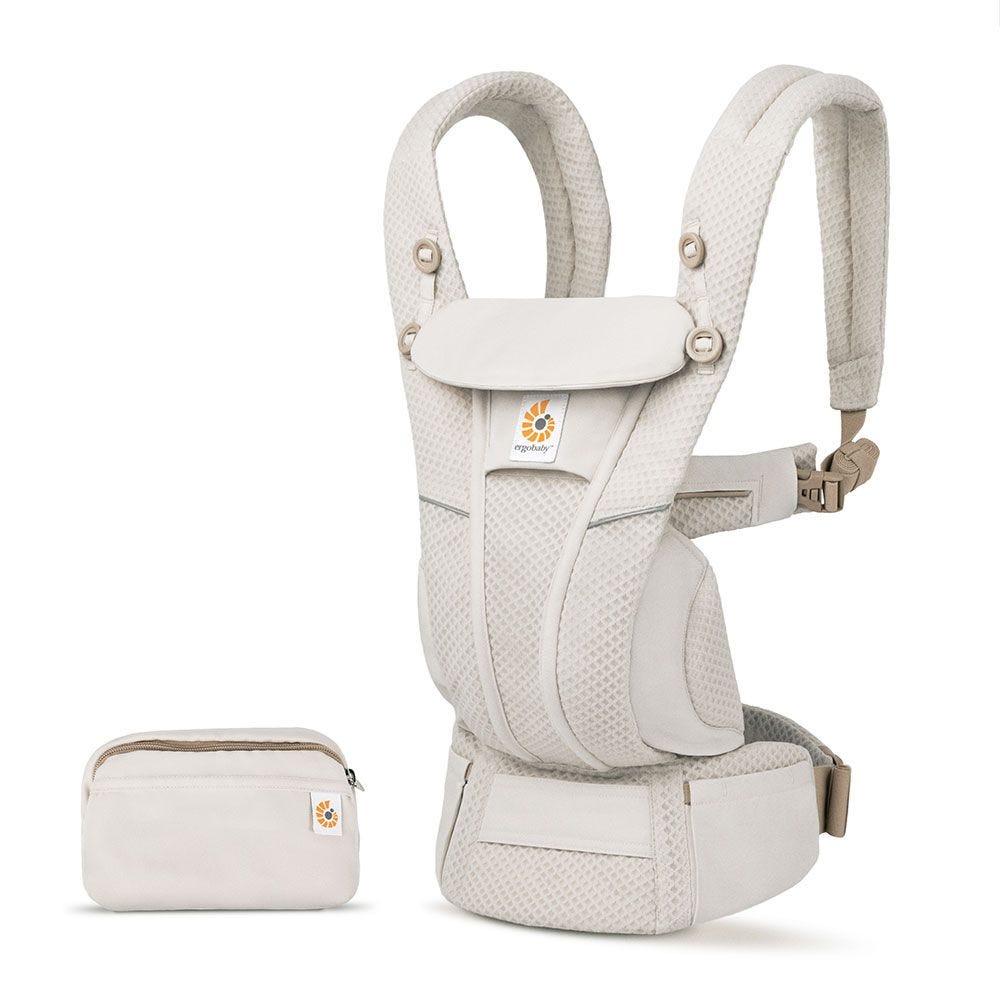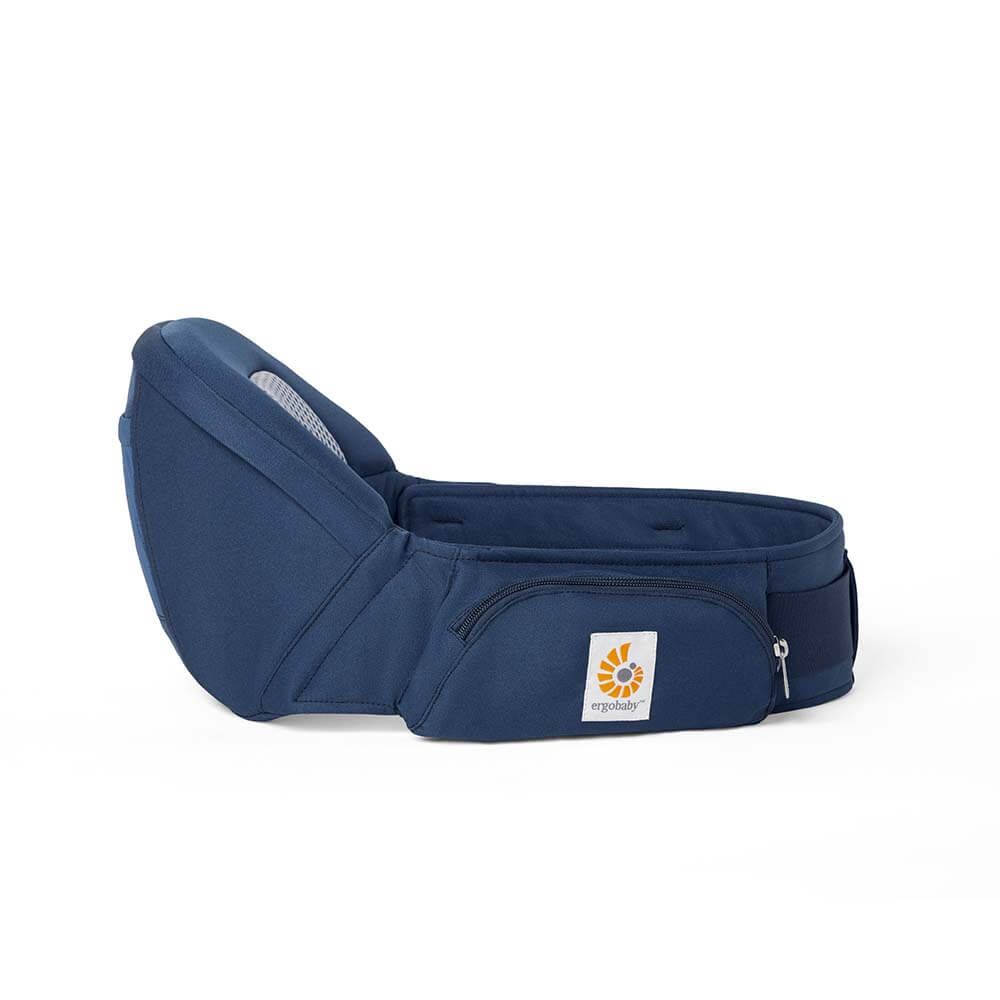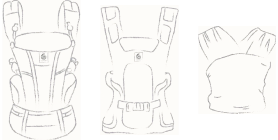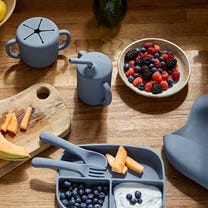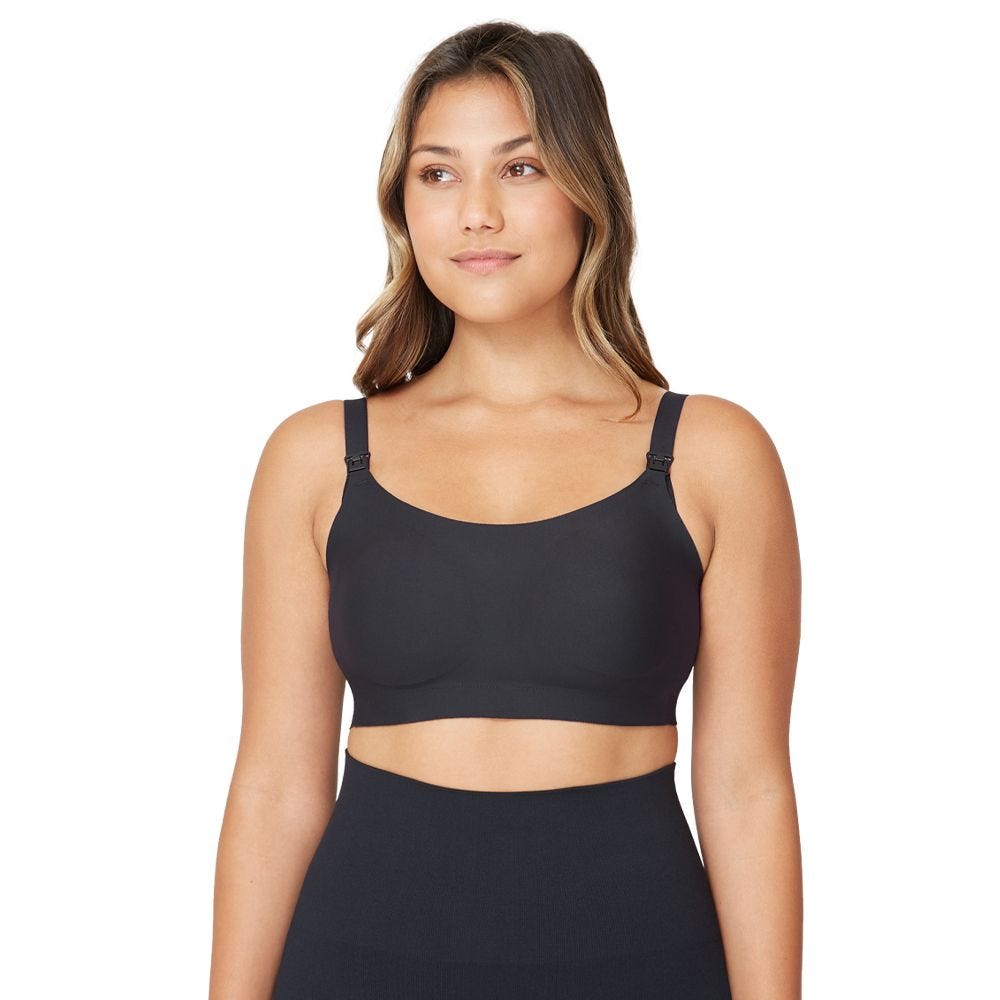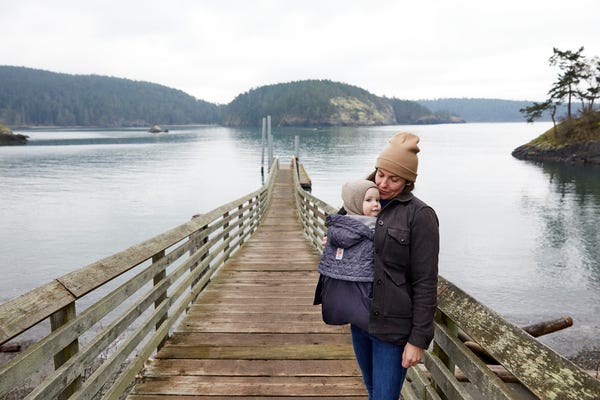
November 04, 2021
Having a baby presents plenty of challenges, and having a baby right before or during winter presents its own set of challenges. But no matter what winter brings, you can survive this cold-weather season with a baby by following our tips for caring for a baby in winter.
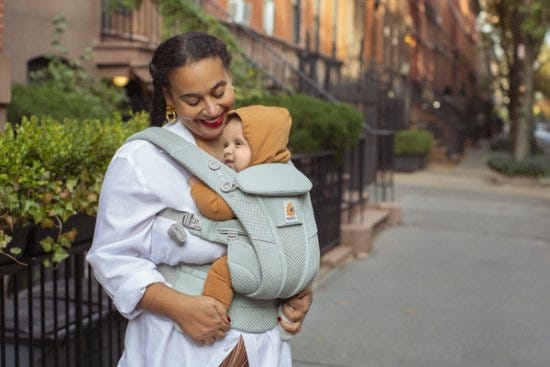 Babywearing nicely tells people, without you actually having to say anything, that you don’t want your baby touched. Plus, if you wear your baby, you don’t have to lug around a heavy car seat. And if you have a backpack diaper bag, you can carry your diaper bag and your baby all while keeping your hands free.
Babywearing nicely tells people, without you actually having to say anything, that you don’t want your baby touched. Plus, if you wear your baby, you don’t have to lug around a heavy car seat. And if you have a backpack diaper bag, you can carry your diaper bag and your baby all while keeping your hands free.
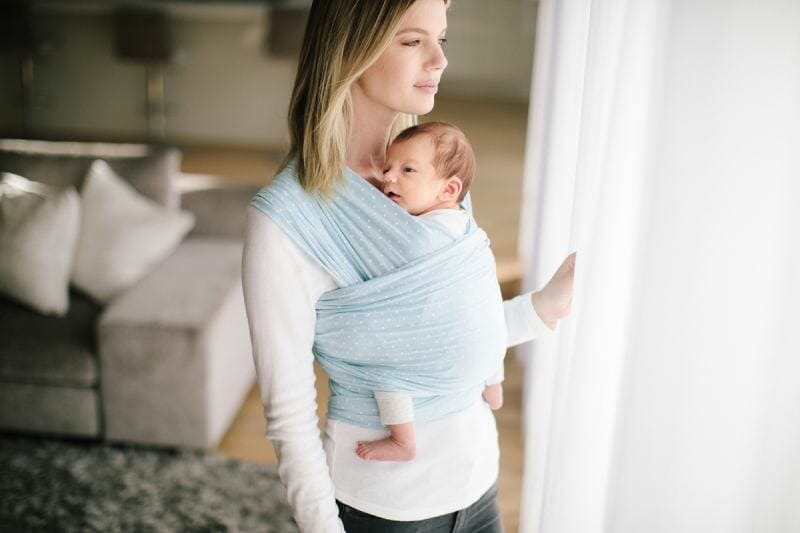 Sunshine naturally helps with winter and after-baby blues. So go outside on warmer, sunny days. Bundled your baby up, put him in his stroller and go on a short walk. Or if it’s just too cold to go outside, sit by a window and soak up that Vitamin D.
Sunshine naturally helps with winter and after-baby blues. So go outside on warmer, sunny days. Bundled your baby up, put him in his stroller and go on a short walk. Or if it’s just too cold to go outside, sit by a window and soak up that Vitamin D.
Tips for Dressing and Babywearing in Winter
Winter can be really hard for new moms. Your mama bear mode kicks in and you may want to hibernate inside your house all winter. And who can blame you? Between cold and flu season and freezing temperatures, no one wants to get out during the winter, let alone do it with a baby. But, staying home can make you stir crazy. Eventually, you’ll want to leave, or you’ll have to leave, and when you do you’ll want to make sure your child is warm and safe…Dress her in breathable layers.
A good guiding parent principle is dressing your baby how you’re dressed, and then adding another layer. So if you’re wearing a long sleeve shirt, jeans and socks, put your baby in a bodysuit, sweater, pants and socks. If you’re going outside, always be sure to put her in a coat, hat, mittens and warm booties. It’s also a good idea to use cotton and muslin fabrics that are warm but breathable so your child doesn’t get too hot. Overheating is just as concerning as letting your baby girl get too cold, so peel off some of those layers once you’re inside.Keep his head and feet covered.
Babies lose heat faster than adults do, and they lose it through their head and feet. Always keep a warm hat, socks and/or infant booties on your baby when you have to go outside. When you’re inside, socks or infant booties are a must. Infant hats are a little different. Yes, they’re adorable, but many experts say babies don’t need to wear hats indoors after they leave the hospital. You can put one on your baby during winter though, just keep an eye on him to make sure he doesn’t overheat while wearing one.Limit outside exposure.
Your baby isn’t yet able to self-regulate her core temperature. That means you have to limit how much time she’s outside, especially newborns and when it’s below freezing, to just a few minutes outside. Quick trips to and from the car are fine, but long walks or standing outside talking to neighbors isn’t a good idea.Try babywearing for warmth.
Using a baby carrier inside and outside helps keep your baby warm with your body heat. The closeness and combined body heat will keep you both cozier during the chill of wintertime, but that also means he may not need to wear multiple layers or a heavy coat. Don’t let him overheat, but still keep him warm and keep his head and feet covered. And as always, keep his face and airway clear; something to be more aware of when you’re wearing a puffy winter coat.Wintertime Car Seat Safety Tips
Car seat safety is a hot topic among parents. Here are some basic tips to keep your baby safe and warm in her car seat during the cold winter months.Take off his coat or snowsuit.
It may seem counterintuitive and like extra work to put your baby in a coat to walk to the car and then take it off to put him in his car seat. But that bulky coat or snowsuit is too much material between your baby and his car seat straps. You’d have to loosen the straps to buckle him in, and if you’d get in an accident, that material could compress and then your baby may not be secure in his car seat. It risks him being injured. So that extra effort to put on, take off and put on his coat again—it’s worth it.Put a blanket over her and the car seat straps.
A blanket can keep your child warm in the car, but never put a blanket between your baby and the car seat straps. Put her in her car seat and then cover her with a blanket or her coat on the outside of the straps. Once the car is warm, though, you may want to remove the blanket so she doesn’t get too warm. You’ll know if she’s overheating if her face gets red, her skin is warm and/or she’s fussy.Start the car before getting inside.
No one likes getting into a car that’s freezing cold, especially if you have leather seats. So to help you and your baby stay as warm as you were inside, start your car and let it warm up before you leave.Winter Tips for Baby’s Bathtime and Dry Skin
Those of you who live in an area where it’s cold and dry during the winter, you might be worried about bathtime and dry skin. Bathing a tiny baby for the first time can be kind of scary, and a baby’s skin is delicate and very vulnerable to winter’s dryness. Here’s how you can feel prepared.Tips for Bathing Your Baby.
A common new-mom question is, “How often do I need to bathe my baby?” Most babies don’t really need to be washed daily, especially in the winter when they probably won’t be outside or sweating. Every other day or even just two to three times a week is fine. The more you bathe your baby, the dryer his skin and scalp will be. Another typical concern is water temperature. While you may like stepping into a steaming, hot shower on a cold, winter day, your baby doesn’t need hot water. Use warm water, around 100 degrees Fahrenheit or just above that. Use a bath thermometer or your elbow to test the water. Another tip to help your baby stay warm while bathing her is washing from her feet up (just make sure if you wash from her feet upward that you don’t use the same washcloth or same part of one you used on her diaper area to wash her face). That way her exposed head is wet with cold water and letting heat escape as you wash her. You can also use a washcloth to cover the areas of your baby you’re not washing to keep her warm.Tips to Prevent Dry Skin.
Water, along with cold temperatures and a lack of humidity, can dry out your baby’s skin. Here’s how you can help your baby’s skin stay soft and moist:- Limit bathtime to about 5-10 minutes.
- Dry your baby off completely.
- Apply a good moisturizer before dressing your baby. You can apply it multiple times a day if necessary.
- Choose a lotion or ointment that locks in the moisture.
Nighttime with Babies in Winter
You don’t want your baby to be cold while sleeping, but you also don’t want him overheating. Have peace of mind while he sleeps by doing the following:Use warm pajamas and/or a sleep sack.
Never add big, loose blankets in her crib. Those could cause your baby to overheat, plus they are a suffocation hazard. Instead, put your baby in warm footed pajamas and maybe a baby sleep bag or sack or cotton or muslin swaddle blanket. If your baby is prone to getting hot quickly, check on her to make sure she’s not flushed or sweating.Adjust your thermometer.
Keep the room your baby sleeps in warm but not too warm. Many experts suggest having your daytime indoor temperatures between 68-72 degrees F and then a tad lower at night, between 65-68 degrees F. Too warm of room temperatures, along with big blankets and heavy clothing, all increase a baby’s risk for SIDS.Get a cool mist humidifier.
This helps add moisture to winter’s dry air. It’s also nice at helping your baby breathe better if he catches a cold.Tips for Preventing and Surviving Wintertime Sickness With Babies
Flu. The common cold. Whooping cough. RSV. These are all things parents worry about—especially those with newborns. Babies have weaker immune systems, making them more susceptible to germs. Do the things you do to keep yourself healthy, i.e. wash your hands, stay away from sick people, keep your bedding and things you touch clean, and follow these tips.Stay home when you can.
Avoid germs by staying home when you can. That may mean you miss a family member’s school program or family holiday meal, but your baby’s health is more important.Go out during off-peak hours.
Stay away from overly crowded places. The more people you’re around, the more likely you and your baby will be exposed to germs. It’s true that you can’t and don’t want to keep your kids away from everything. They need to build up their immune system. But, your infant’s immune system isn’t as well developed as yours, so you want to keep that in mind. So run your errands when most other people aren’t.Go to the doctor’s office during slow times.
Try and be one of the first appointments so you’re not sitting in a waiting room full of sick kids. Doctors are understanding to moms with babies. Some doctor’s offices even let new moms bring their babies in for checkups earlier during sick seasons than they normally open.Wear your baby.
 Babywearing nicely tells people, without you actually having to say anything, that you don’t want your baby touched. Plus, if you wear your baby, you don’t have to lug around a heavy car seat. And if you have a backpack diaper bag, you can carry your diaper bag and your baby all while keeping your hands free.
Babywearing nicely tells people, without you actually having to say anything, that you don’t want your baby touched. Plus, if you wear your baby, you don’t have to lug around a heavy car seat. And if you have a backpack diaper bag, you can carry your diaper bag and your baby all while keeping your hands free.
Use a humidifier in the nursery.
Winter air is not only cold, it’s also dry. And dry air not only dries out our skin, but it can also dry out our nose and make us more susceptible to sickness and infection. Humidifiers put moisture back into the air, which can help prevent sickness and also help if your baby has a stuffy nose.Have the right items on hand.
No matter how hard you try, there’s still a chance your baby will get sick, and you want to be prepared if she does. Here are some things you might want to buy:- Saline drops
- Baby aspirator
- Baby-safe vapor rub
- Digital thermometer
- Baby pain-reliever medicine
- Essential oils (if you’re into that).
Ways To Cope With Postpartum and Seasonal Depression in Winter
Surviving winter with a baby is more than knowing how to dress, bathe and keep him safely warm in his car seat. It’s about practicing self-care, too. You can’t completely be there for your child if you don’t take time to manage your own physical and mental health. In the United States, 1 out of 9 women experience symptoms of postpartum depression, while 10 million Americans experience seasonal affective disorder. SAD comes with a myriad of symptoms; symptoms you’d think of when someone has the winter blues, such as feeling sad or hopeless, having a decrease in energy, irritability, fatigue, change in appetite, etc. SAD is 4 times more common in women than in men, and approximately 4-6 percent of people have winter depression. With shorter days and cold weather, it’s common to experience the winter blues, and every season some mothers can experience after-baby blues. The holidays can be fun, but they can also add stress this time of year as well. Preventing holiday stress will help you enjoy your time with family and friends more. If you want to try and make your winter postpartum recovery better, here are some wintertime coping strategies.Make time for yourself.
You may feel guilty the first time you leave your baby (totally normal), but me time is the mental health self-care you need. You need time to refresh and relax so you can be a better mom, partner and person. So go get a pedicure or a massage. Take an hour to grab some hot chocolate and shop alone. Do whatever you enjoy; just make time for yourself and don’t feel bad doing it every once in a while.Spend time alone with your partner.
Playdates tend to be sparse during the winter months because of the weather and illnesses. As much as you love that little baby, you’re going to crave adult interaction—and your partner is going to crave uninterrupted alone time with you. So when you feel ready, start going back out on dates.Get sunshine when you can.
 Sunshine naturally helps with winter and after-baby blues. So go outside on warmer, sunny days. Bundled your baby up, put him in his stroller and go on a short walk. Or if it’s just too cold to go outside, sit by a window and soak up that Vitamin D.
Sunshine naturally helps with winter and after-baby blues. So go outside on warmer, sunny days. Bundled your baby up, put him in his stroller and go on a short walk. Or if it’s just too cold to go outside, sit by a window and soak up that Vitamin D.

